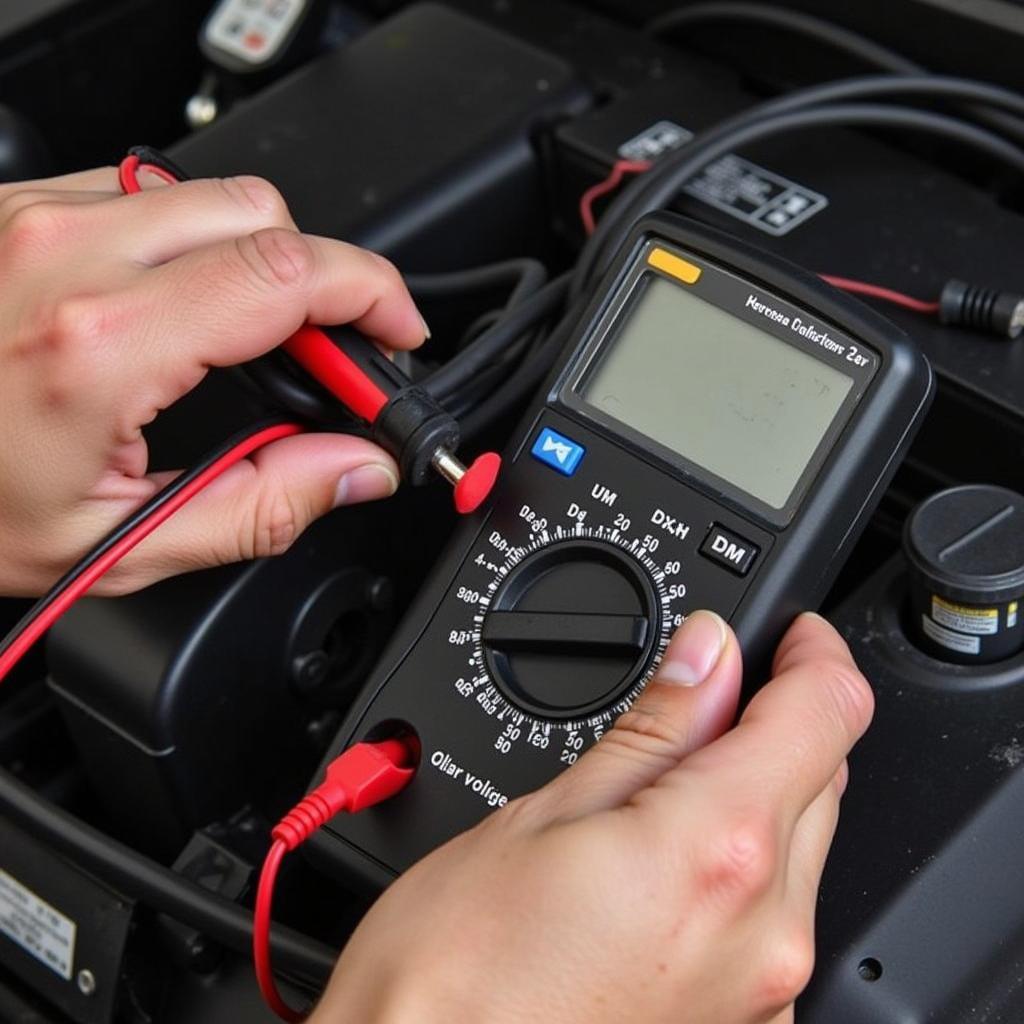“My battery is bad”—a phrase uttered by countless drivers, often accompanied by a sinking feeling of dread. A failing car battery can quickly turn a routine day into a frustrating ordeal. This comprehensive guide will equip you with the knowledge and tools to diagnose, troubleshoot, and even prevent future car battery issues.
Understanding Why Your Battery Might Be Bad
Several factors can contribute to a bad car battery. Everything from extreme temperatures to parasitic drains can shorten a battery’s lifespan. Let’s delve into some of the most common culprits:
- Age: Like all things, batteries have a limited lifespan. Most car batteries last between three and five years. pioneer car radios with bluetooth can also sometimes contribute to battery drain if not properly configured.
- Corrosion: Battery terminals and cables can corrode over time, disrupting the flow of electricity. This often appears as a white, powdery substance around the terminals.
- Extreme Temperatures: Both extreme heat and extreme cold can put a strain on your battery.
- Parasitic Drains: Even when your car is off, certain electrical components can continue to draw power, slowly draining your battery. This can be caused by faulty wiring, malfunctioning components, or even leaving interior lights on.
- Overcharging/Undercharging: A faulty alternator can either overcharge or undercharge your battery, leading to premature failure.
How to Tell if Your Car Battery is Dying
So, how can you tell if your battery is actually the problem? Look out for these telltale signs:
- Slow Cranking: The engine cranks slowly when you try to start the car.
- Dim Headlights: Headlights appear dimmer than usual, especially when the engine is idling.
- Clicking Sound When Turning the Key: A rapid clicking sound indicates a low battery voltage.
- Dashboard Warning Light: The battery warning light illuminates on your dashboard.
- Swollen Battery Case: A swollen or bloated battery case suggests internal damage and requires immediate replacement.
Diagnosing the Problem: Is it Really the Battery?
 Testing Car Battery with Multimeter
Testing Car Battery with Multimeter
Before you rush out to buy a new battery, it’s important to confirm that the battery is actually the source of the problem. Sometimes, the issue lies elsewhere, such as a faulty alternator or starter. A simple test with a multimeter can help you pinpoint the culprit. Connect the multimeter to the battery terminals and check the voltage reading. A fully charged battery should read around 12.6 volts.
Using a Multimeter to Test Your Car Battery
- Turn off the engine and all electrical accessories.
- Connect the red lead of the multimeter to the positive (+) terminal of the battery.
- Connect the black lead of the multimeter to the negative (-) terminal of the battery.
- Read the voltage on the multimeter display.
If the voltage is significantly lower than 12.6 volts, your battery is likely discharged or faulty. You might be able to jump-start the car, but a more thorough check is still recommended. Have your battery tested at a local auto parts store or by a qualified mechanic. You can sometimes even set up pioneer car radio bluetooth setup yourself.
What to Do When Your Battery is Bad
Once you’ve confirmed that your battery is indeed bad, you have a few options:
- Jump-Starting: This is a temporary solution to get your car running again. However, it’s crucial to address the underlying issue causing the battery to discharge.
- Replacing the Battery: If your battery is old or severely damaged, replacement is often the best course of action.
- Charging the Battery: If the battery is relatively new and simply discharged, charging it with a battery charger can restore it to full capacity.
Preventing Future Battery Problems
Regular maintenance can significantly extend the life of your car battery. Here are a few preventative measures you can take:
- Clean Battery Terminals: Regularly clean the battery terminals and cables with a wire brush and a mixture of baking soda and water. Check out our resources on how to set up pioneer car radio bluetooth to potentially save battery life.
- Check for Parasitic Drains: If you suspect a parasitic drain, have a qualified mechanic inspect your car’s electrical system. You might be interested in knowing more about pioneer bluetooth car radio deh-s4250bt.
- Limit Short Trips: Short trips don’t give the alternator enough time to fully recharge the battery. Try to combine errands or take longer drives whenever possible.
- Turn Off Accessories When Not in Use: Avoid leaving lights, radio, or other accessories on when the engine is off.
“Proper battery maintenance can save you a lot of headaches down the road,” says John Smith, ASE Certified Master Technician. “A little preventative care can go a long way.” Similarly, Jane Doe, Lead Automotive Engineer at Acme Auto Solutions, advises, “Regularly checking your battery’s voltage can help you identify potential problems before they leave you stranded.”
Conclusion
“My battery is bad” can be a frustrating realization, but by understanding the common causes, symptoms, and diagnostic procedures, you can take control of the situation. By implementing preventative measures and staying informed, you can ensure your car battery remains reliable for years to come. car radio pioneer bluetooth could be a great addition to your car, but make sure your battery is up to the task.

